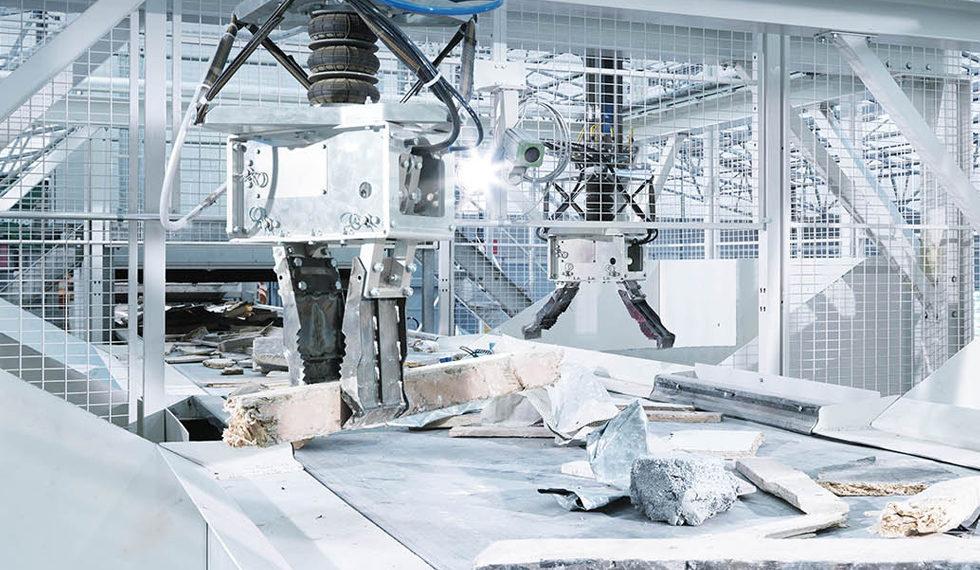
5 Technologies That Would Change Waste Management Industry
Today’s waste management system can’t deal with the tons of trash that are generated every single day.
Automating the procedure of trash disposal or sorting, by using artificial intelligence for smart waste management and recycling, is expected to be better garbage disposal method to recycle.
Do you remember the story of the sci-fi movie, Wall-E, where robot waste compactors were stationed on earth to clean it?
Although set in the near future, this movie brought to our notice the unpleasant ecological reality of today.
With the generation of about 1.3 billion tons of waste materials every single day, the effective use of machines and robots to manage this trash is the particular need of the day.
1. Automated Waste Sorter
The year 2012 saw a Finnish company, ZenRobotics, that used artificial intelligence for smart recycling by handling waste materials with the use of an automated waste sorter.
With the perfect combination of machine learning, artificial intelligence, and computer vision, the robots run a synchronized trial to pick or sort recycled waste materials from revolving conveyor belts.
Since that time, using technologies in the field of recycling and waste management have come a long way, improving itself in recent times.
2. RFID Tags
Waste materials picking or sorting structure has seen a change in the advancement of RFID tags. Songdo, a South Korean city, uses RFID tags to identify the trash, under different tags.
A pneumatically-driven waste disposer then scans these tags. Keeping that in mind, the main server, which saves all this data and information, runs a proper technique to dump the total waste generated.
3. IoT Sensors and Artificial Intelligence Programs
Intelligent trash can, which is built with artificial intelligence software programs and IoT detectors, is another groundbreaking plan in the waste management field.
The particular detectors on these trashcans measure the waste thrown inside them and send this information via advanced servers to the major removal system for processing.
This system categorizes the information into the type of waste, the level, and quantity of each type of waste, and the particular waste disposal system.
This system can also fine-tune itself as time passes by learning historical data to improve its performance.
4. Computer Vision Programs
Trash dumps have begun using waste picking and sorting robots.
The automated smart machines are progressively replacing conventional waste picking methods. Skillful in multi-tasking, the robots can easily sort tons of trash relentlessly in a day.
Most of these robots are heavily autonomous when it comes to their vision programs and can effortlessly separate a paper and tin foil.
These types of considerable systems have tremendous potential for application in an array of industrial sectors.
5. Using Artificial Intelligence for Smart Waste Management
Global plastics manufacturing had increased from 250 million metric tons in 2017 to 350 metric tons in 2018: only about 15 percent of this is only recycled.
The other 85 percent is either trashed into landfill or penetrates the environment, triggering a considerable amount of pollution.
The Ellen MacArthur Foundation reports that, by the year 2050, there’ll be more plastic in the marine than fish (by quantity and weight).
The big Pacific trash patch, 98.9 percent of which is plastic, covers an area 3 times the size of Italy.
National Geographic published a list of actions all over the world to prevent plastics from stepping into the marine.
When it comes to recycling exactly what we have, the good thing is investments in waste, and recycling technologies reached a five-year-record high in 2019, and there are many possibilities for companies to work together with modern solutions.
A couple of engineers from SFU Mechatronics Systems created an AI-powered smart waste management equipment to reinvent both recycling and businesses. The smart containers can think for themselves while sending and sorting garbage.
All you have to do is to put the trash into the container. The container then takes advantage of its detectors to compare or study the garbage recovered from the previous waste records and then decides on what has to be done with trash.
Primarily based on the decision, the container itself sends the waste to a proper disposal system, whether it’s a drop zone or a recycling plant.
With more intelligent solutions to dump the trash, we can certainly expect a substantial reduction in the waste generated throughout the world. This may significantly help in maintaining our ecosystem for a sustainable and better future.
Main image: Zen Robotics robots at work as part of a waste management system installed at Ar-Val. Picture courtesy of Ar-Val.com.
